The writing of “On Assignment -The Great War”
Published: 12 June 2022
By Joseph Caro
Special to the Doughboy Foundation web site
Writing On Assignment: The Great War started with the Internet.
I had just finished writing a self-help consumer book The California Lemon Law – When Your New Vehicle Goes Sour and decided to look-up some grade-school chums back in New Jersey that I haden’t seen since 1957. I did my research and found a few and was surprised when I opened an e-mail from Barry Fitzgerald, a school mate from my past. ‘Fitz’ heard from a friend that I was inquiring about St. Mary’s grads way back then, and wrote me to share the “good old days’.”
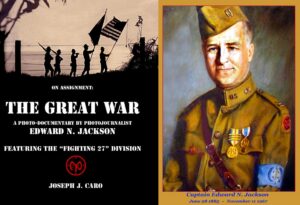 I mentioned that I was writing books these days and we got around to his grandfather, Eddie Jackson, a New York City news photographer and some of his accomplishments. “I have tons of his old news photo- graphs” Fritz stated, would you like to take a look at them and see if you thought he was book-worthy.” My curiosity was peaked and I couldn’t let a former classmate down and I asked for the photos to be sent to California. What I didn’t expect was boxes upon boxes of photographic prints to show-up at my door!
I mentioned that I was writing books these days and we got around to his grandfather, Eddie Jackson, a New York City news photographer and some of his accomplishments. “I have tons of his old news photo- graphs” Fritz stated, would you like to take a look at them and see if you thought he was book-worthy.” My curiosity was peaked and I couldn’t let a former classmate down and I asked for the photos to be sent to California. What I didn’t expect was boxes upon boxes of photographic prints to show-up at my door!
Some where dated as far back as 1910 and surprisingly, many were of WWI. The boxes also contained some scattered yellowed pages of Eddie Jackson’s journal. The more I read about his exploits and matched them with the pictures, the more impressed I became with this man, Edward N. Jackson. I even Googled his name but came up empty. He deserves more than this I recall saying to myself, as my mind thought of ways to present him to the public. His remarkable efforts to photograph WWI was the beginnings of On Assignment: The Great War.
Born in Philadelphia in 1885 the son of an impoverished Irish immigrant family, the slightly built young ‘Eddie’ only completed a sixth-grade education before he had to earn some of his upkeep at home. Born the youngest of four siblings, ‘Eddie’ always referred to himself as the “runt of the litter.” He started working as a news paperboy standing on corners peddling local papers as well as delivering groceries from the local market. “I remember soup-house days back then” he commented in his journal, “when we didn’t have enough to eat we would go to the local soup house and get a ticket for a loaf of bread and a ticket for a can of bean soup.”
Jackson met Mr. Applegate, a local studio photographer one Saturday selling papers, who offered him a job at his photographic studio, the rest, as they say, is history.
1917- While the war was escalating throughout Europe, Eddie Jackson had become a well regarded news photographer in New York City and had photographed Woodrow Wilson many times as Governor of New Jersey as well as during his first Presidential term. He knew him well. Jackson realized that America would be drawn into the war, it was just a matter of time. Eddie wanted to photograph it. That opportunity will soon present itself after Wilson was again elected President in 1917 and asked Jackson if he wanted to pho- tograph his inauguration ceremony. This gave Eddie the opportunity to use his political weight and got ap- pointed Official Press Photographer for the War Department. That is, of course, after some heavy arm-twisting of the Secretary of the Navy, Josephus Daniels. Two weeks later, President Wilson declared war on Germany after learning of the infamous Zimmerman Letters.
An “old man” at 32 years, Edward N. Jackson was given an officers commission and eventually was given a film crew of three and assigned to the Signal Corps when he received his orders to depart on a troop ship to France.
Jackson was attached to the famous New York 27th Division of the 7th. Regiment, headed by Major Gen- eral John F. O’Ryan the leader of “O’Ryan’s Roughnecks” of the “Fighting 27th. Reserves.”
Jackson writes: “A dark night of August 20, 1917 found me at last, pointed towards the battlefields in France aboard the troop ship Agamemnon or ‘Aggy’ as we called her. She had once been a German passenger liner Kaiser Wilhelm II.” We silently slipped away from the pier in Hoboken, NJ and out onto the Atlantic headed for Brest, France.”
Jackson would soon realize and experience the horrors of a war where 10 million fighters would die, dirty and disheveled, in pain and agony. The nightmare of this war was more than Jackson could ever realize. Not only was Eddie Jackson outfitted with heavy camera equipment, he also had a Colt firearm strapped to his waist. He lived with the troops and fought in battles with them.
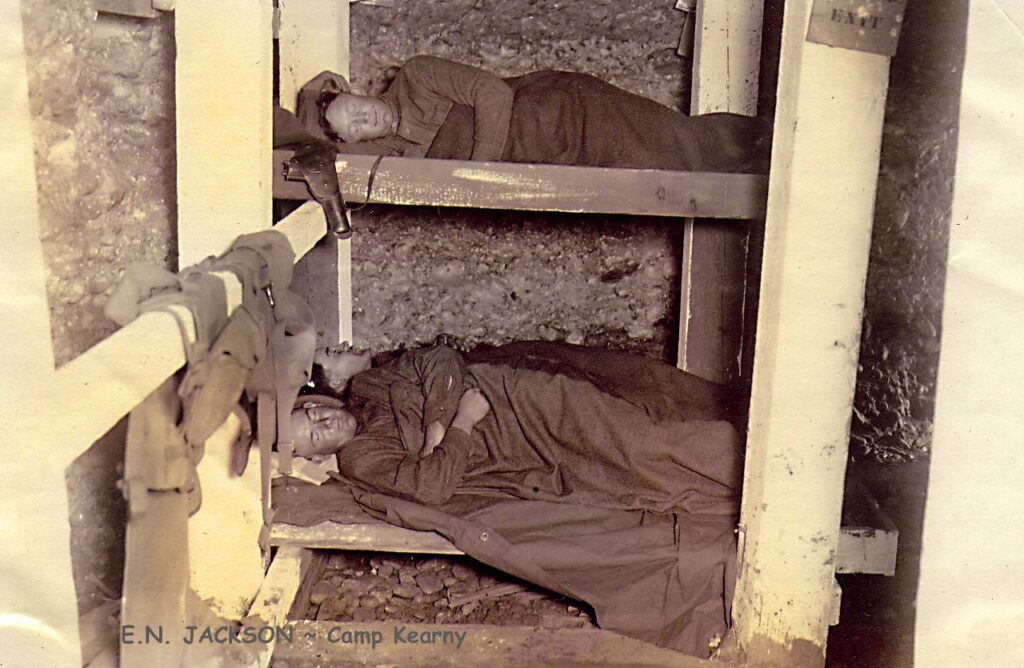 Troops resting in underground trench bunker bunks
Troops resting in underground trench bunker bunks
‘In my hut the first night I had a revealing glimpse of the somber side of war.” Jackson writes in his journal, “Stark and bare and without the trimmings to stir up patriotic fever. With us in the small hut were billeted shell-shock cases that had been in “No Man’s Land” and were being evacuated the next day. Sleep was out of the question with moaning, shrieking and hysterical laughing. Some imagined they were talking to wives and sweethearts, some saw the enemy everywhere. So it went.”
The Hindenburg Line
Another excerpt from Jackson’s journal: “Two officers came over to where I was standing and looking around, they pointed to something unusual on the ground . . . ‘Look, look, what is that?’ I walked over to see what the excitement was; it looked like the top of a skull, a human skull, half embedded in the soft wet earth. All of us just stood there, not believing what we saw, this naked skull was the remains of what had been a soldier, now just bone with some green slimy matter running out of it.”
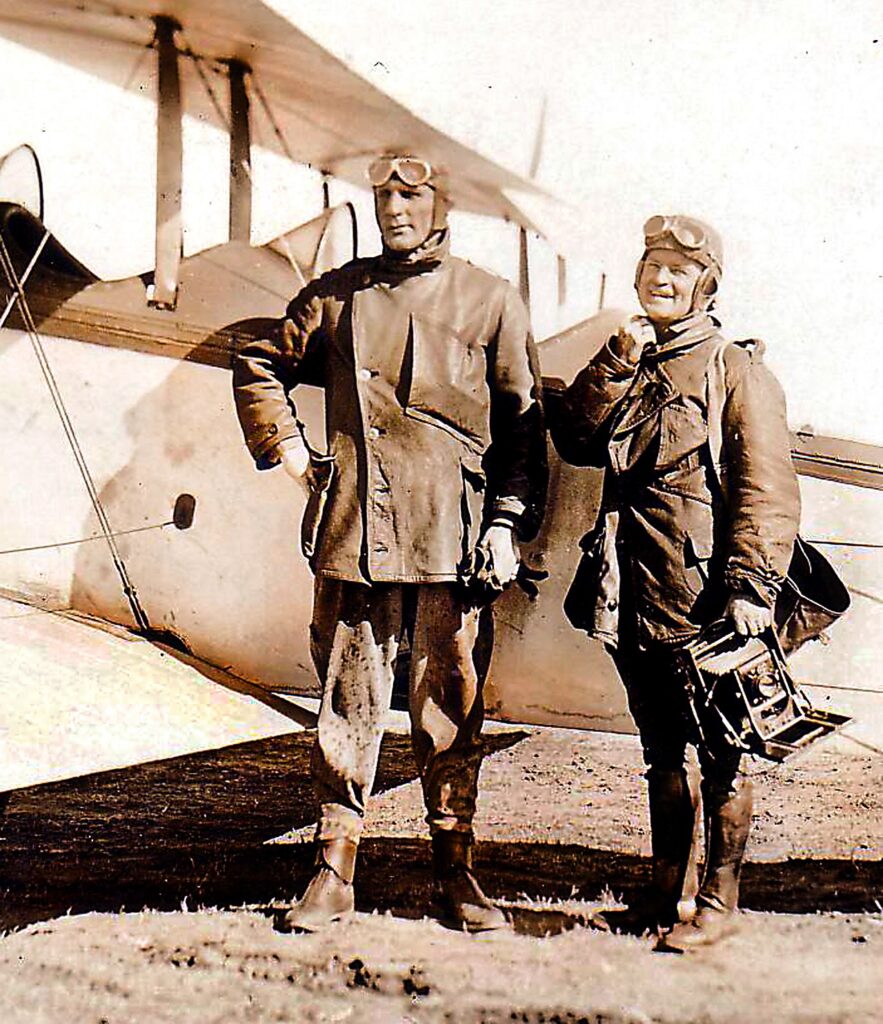 E. Jackson (r) prepares for photo operation in a Curtiss Jenny aircraft
E. Jackson (r) prepares for photo operation in a Curtiss Jenny aircraft
The Fighting 27th. Division
A regiment of 3,700 arrived in France billeted at Camp Pontanezen for fighting orders, they were joined with the 30th. Division at Mt. Kemmel. After six weeks in trenches sustained casualties of 29 killed, 159 wounded. They attacked the infamous Hindenburg Line with the 107th. Regiment. Other bat- tles included: La Salle River, Jone De Mer Ridge, St Maurice River, St. Souplet with the loss of 580 men and 1,480 wounded.
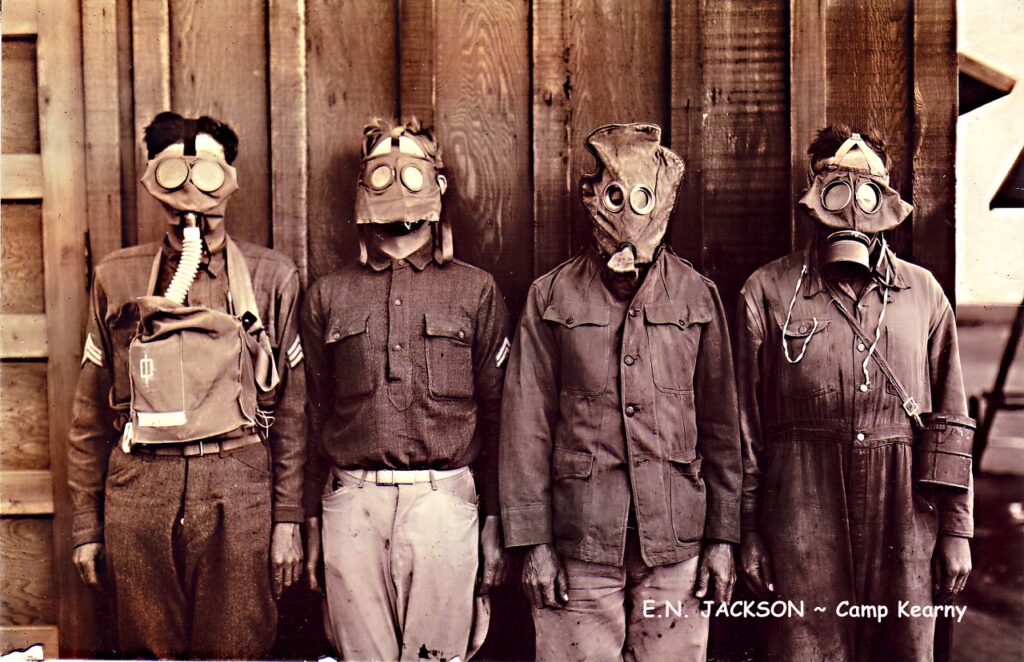
Troops display different gas masks used in trenches
The Armistice
Edward N. Jackson was the key photographer for the A.E.F. (American European Forces) and was cited for bravery on several occasions for his work while under fire. Promoted to Captain for his bravery in Corbie, France. Following the Armistice, Jackson was appointed “official European photographer” for President Wilson including both presidential trips and the final Treaty of Versailles. Jackson’s historic photo and film of “The Big Four” world leaders during the treaty in May, 1919 of: David Lloyd George, Prime Minister of England, Vittorio Orlando, Italian Premier, Georges Clemenceau, Premier of France, and President Woodrow Wilson, would be carried world-wide and destined for history books.
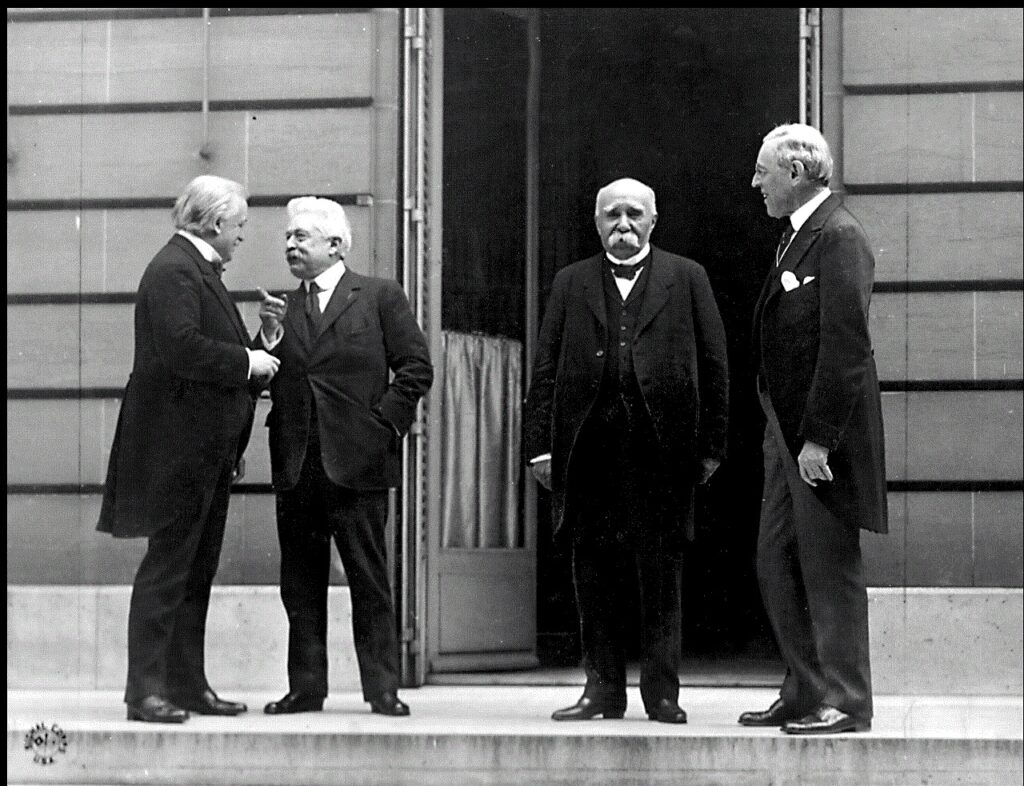 Famous Big Four Photograph during treaty negotiations
Famous Big Four Photograph during treaty negotiations
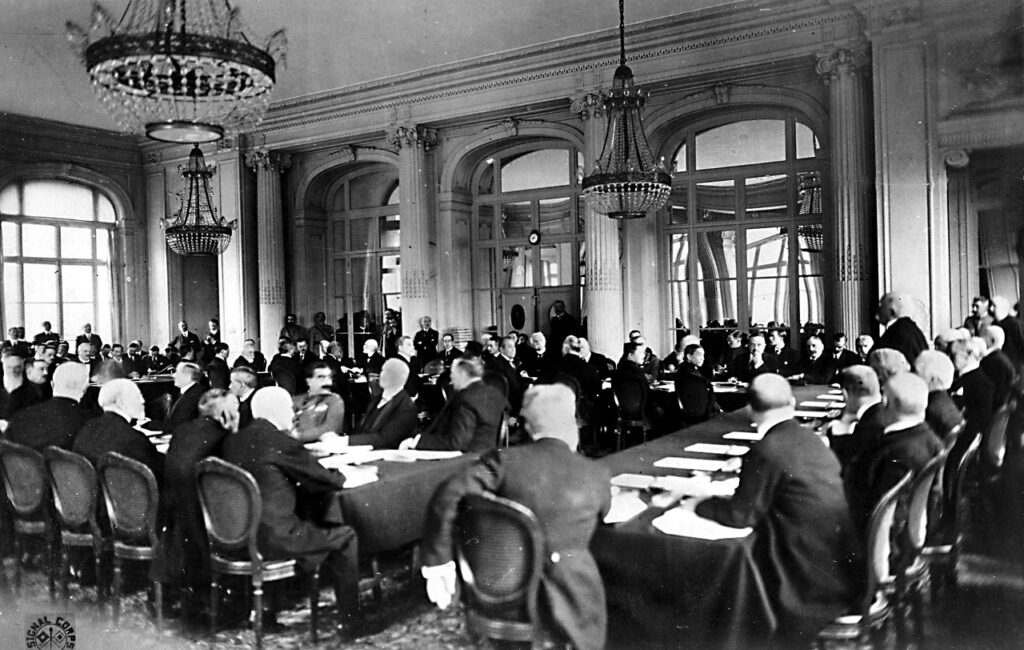 Only photo ever taken of the actual treaty talks at Versailles, France
Only photo ever taken of the actual treaty talks at Versailles, France
 Prince Albert and Queen of Belgium with President Wilson & wife during treaty talks in Paris
Prince Albert and Queen of Belgium with President Wilson & wife during treaty talks in Paris
Gold Star Mothers
Edward Jackson’s war assignment did not end with the Treaty of Versailles as he was asked again, to visit France in 1930 as the guide and head of the first delegation of Gold Star women of the Gold Star Pilgrimage, undersigned by the Secretary to the President. Eddie later commented that the honor to be with these wonderful women was the greatest privilege ever given to him.
In Flanders fields the poppies grow
Between the crosses row on row
That mark our place; and in the sky
The larks still bravely signing, fly
. . .
If ye break faith with us who die
We shall not sleep, though poppies grow
In Flanders fields
John MacRae
External Web Site Notice: This page contains information directly presented from an external source. The terms and conditions of this page may not be the same as those of this website. Click here to read the full disclaimer notice for external web sites. Thank you.



